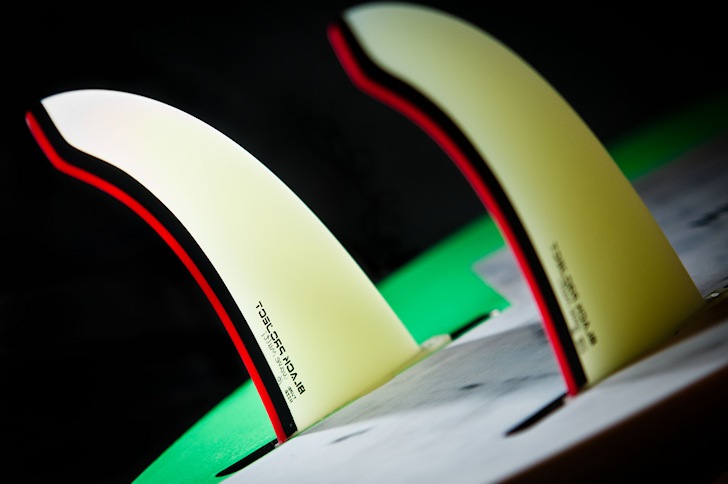Windsurf fins are increasingly connected with performance. In the 21st century, you can easily test and feel the subtle differences between fin setups.
When it comes to fin setups, windsurfers usually face an equation with four variables.
Single, twin, thruster, or quad? Additionally, you can also have different fin shapes and formats.
There is no "perfect fin setup" for you. There are multiple setups for a wide range of circumstances.
Windsurfing fins have five key features: outline shape and length, profile and width, rake angle, flexibility and twist, and fin box system.
"Everything we do in windsurfing is about balance, about calculated tradeoffs. Advanced or lighter riders are likely to choose one size smaller", underlines Chris Freeman, Head of Sales and Marketing at Black Project Fins.
Simon Bornhoft, the author of "RYA Intermediate Windsurfing," has also designed a simple formula for choosing fin sizes in centimeters.
For recreational or free ride boards between 110-200 liters, multiply your sail size by 5 and add 4.
You'll get the approximate fin size in centimeters (example: 7 square meters x 5 + 4 = 39 centimeters fin).
For recreational or free ride boards below 110 liters, multiply your sail size by 5 and add 2 (example: 5 square meters x 5 + 2 = 27 centimeters fin).
Finally, increase your fin size between 1-4 centimeters if you feel underpowered, slow at planing, or are having difficulty staying upwind if you're using a board with a tail wider than 40 centimeters, if your board is spinning out a lot if your weight is over 85 kilograms, and if you're using exceptional large rigs.
You should decrease your fin size between 1-4 centimeters if you feel overpowered if the windward rail and/or nose of the board lifts up all the time and if you are under 70 kilograms.
Balancing Everything
Balance is really important, and windsurfing fins are deeply linked with several conditions: the windsurf spot, the wind speed and direction, the windsurfer's experience, the windsurfer's weight and height, the type of windsurfing board, and the type of windsurfing sails.
The characteristics of the windsurfing spots are critical.
"If you are riding 10 percent cross-shore and 90 percent onshore, then you would certainly need to choose bigger and maybe even different styles of fins to those sailing more consistently in cross-to-cross-off conditions," explains Freeman.
Bigger waves, stronger winds, and currents will require more grip and, therefore, bigger fins.
Onshore winds demand extra length, while offshore winds ask for smaller fins. Choppy conditions require more area and/or depth to help maintain control.
Experience is very important. Intermediate and advanced wave windsurfers will be more efficient with smaller fins.
Speed windsurfers can pick asymmetrical fins that adapt to port or starboard tack variants.
Wave jump fanatics will get the most out of their equipment if they pick fins with a larger area, which means more acceleration.
Windsurf boards that feel stiffer in the water need smaller fins to loosen up, while looser boards can handle bigger fins.
"Also, boards with more vee and/or concaves will naturally have more directional stability, allowing the rider to choose a smaller fin," adds Freeman.
"Fins help to balance the power of the sail, and the board to create optimal forward motion. Sails that generate more power will need bigger fins to counter and balance than sails with less power".
What about fin setups? Is there a general rule? No, but a Single fin setup will be good for high wind bump and jump conditions.
Twin fin setups are usually great for classic wave riding and less for performance planing.
Thruster fin setups are getting more popular for their maneuverability, but Quad setups are considered the near-perfect pick for their loose feel, drive, early planing, and balanced grip.
Black Fins Project, Choco Fins, K4 Fins, Maui Fin Company, Maui Ultra Fins, Select, Techart, and Unifiber are some of the best windsurfing fin manufacturers.
Discover the windsurf board size chart and take a look at the windsurf fin calculator.
